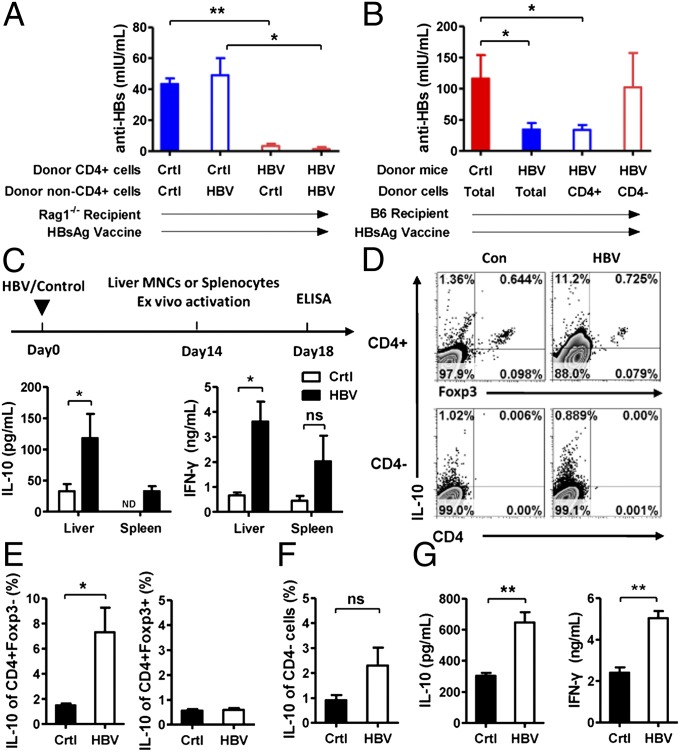Fig. 2.
HBV-specific regulatory cells are IL-10–producing Tr1-like cells. (A) CD4+NK1.1− cells were sorted from splenocytes of control or HBV-carrier mice, and the remaining cells without CD4+NK1.1− cells were called non-CD4+ cells. Recipient Rag1−/− mice received CD4+ cells and non-CD4+ cells in various combinations. (B) Naive recipient mice were divided into four groups: two groups received an intravenous transfer of total splenocytes (2 × 107) from control or HBV-carrier mice, and the others received an intravenous transfer of CD4+ cells (0.4 × 107) or non-CD4 cells (1.6 × 107) from HBV-carrier mice, respectively. Three days after cells transfer, recipient Rag1−/− mice were immunized with HBsAg vaccine twice within a 2-wk interval and then anti-HBs levels were detected for the treatment shown in A and B at day 7 after the last HBsAg vaccination. (C) Liver MNCs or splenocytes from control or HBV-carrier mice were cultured with anti-CD3 plus anti-CD28 antibodies. After 96 h, supernatants were assessed for IL-10 and IFN-γ levels. (D) Treatment was performed as in C. IL-10 expression levels in CD4+ or CD4− cells from liver MNCs of HBV-carrier or control mice was determined by flow cytometry. (E and F) Statistical analysis of IL-10 expression in CD4+Foxp3− or CD4+Foxp3+ cells (E) and in CD4− cells (F). (G) Treatment was performed as in C. Hepatic CD4+ T cells were purified from control or HBV-carrier mice, and then supernatant levels of IL-10 and IFN-γ were detected. ND, not detected; ns, no significance. Results represent two to three independent experiments (n = at least 3 per group). *P < 0.05 and **P < 0.01.

